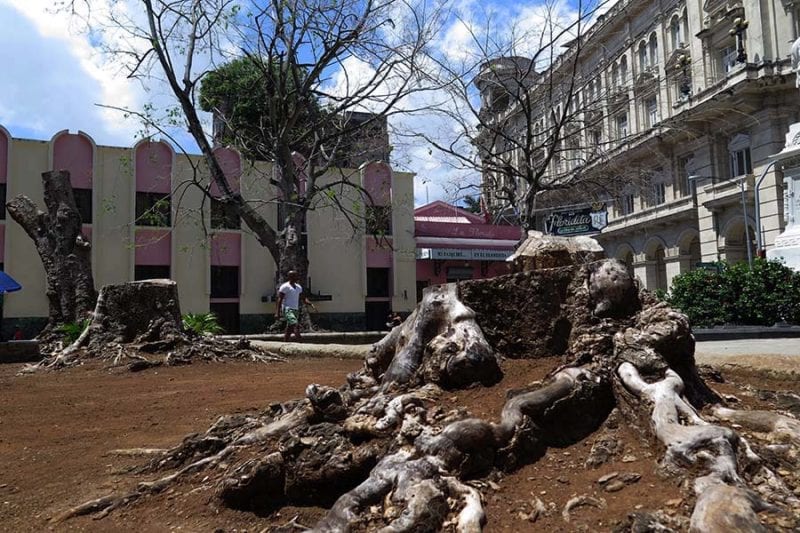Havana’s Trees: Excessive Pruning and Poor Maintenance
Photo feature: Elio Delgado Valdes

HAVANA TIMES — The replacement of one of the 28 Royal Palm trees in Parque Central that mark the day the Cuban Apostle Jose Marti was born, has caught the attention of passers-by. The concern I have is great when I see dry trees in certain urban spaces, some of which are famous, revealing the lack of a government policy on specialized treatment which ensures their maintenance.
The city has many old trees, some of them are in a wretched state, and new trees replacing the old can be seen. Used in urban design, the Jaguey poplar was planted in parks, avenues and highways after the city extended, taking into account the balance between new buildings and green spaces.
The rapid growth of the city’s trees and the shade produced have also caused roots to develop over time. They should have maybe have used other tree species that favor street and pavement care and maintenance.
Of course, the implementation of alternative practices so as to manage these green areas have been zero, the experience with the historic Templete Ceiba tree should be extended to other places in the city. We are in desperate need of an urban reforestation plan to replace old and sick trees in our city’s green areas.

The small Albear Park looks terrible, its trees have been cut down and nearby, on the Paseo del Prado, trees have been excessively pruned, the shade where people gathered together to seek refuge from the scorching sun has now disappeared.
Renovation of green areas to the right side of the National Capitolio building, where old tree roots had broken up the pavement, have been redesigned with small bushes. People miss the shade of this leafy ceiba tree on this corner, which was struck down by a bolt of lightning a few years ago. Putting it back up would give the place of rest to passers-by.
The 1999 Cuban forestry law lays out pruning to improve, not the destruction that takes place when hurricane season draws near. The constant and appropriate management of urban trees is in desperate need of protocol that can then be applied. Damage to urban architecture where heritage buildings such as the Santa Clara Convent, with embedded trees, speed up the damage or collapse of these buildings in busy areas such as “El Curita” Park, which requires the attention of a Cuban forestry service.
Celebrating Tree Day or getting together to sit down and talk about the environment isn’t an alternative, ecological damage is spreading across the city.
Click on the thumbnails below to view all the photos in this gallery. On your PC or laptop, you can use the directional arrows on the keyboard to move within the gallery. On cell phones use the keys on the screen.


















It would be helpful to have comment from the local government departments, about what we see in these photographs. I suspect that a number of the trees shown in the the pictures that were removed was due to old age or perhaps a local disease.
Perhaps we can have pictures of the lovely trees shown in the vicinity of the supposed badly looked after trees.